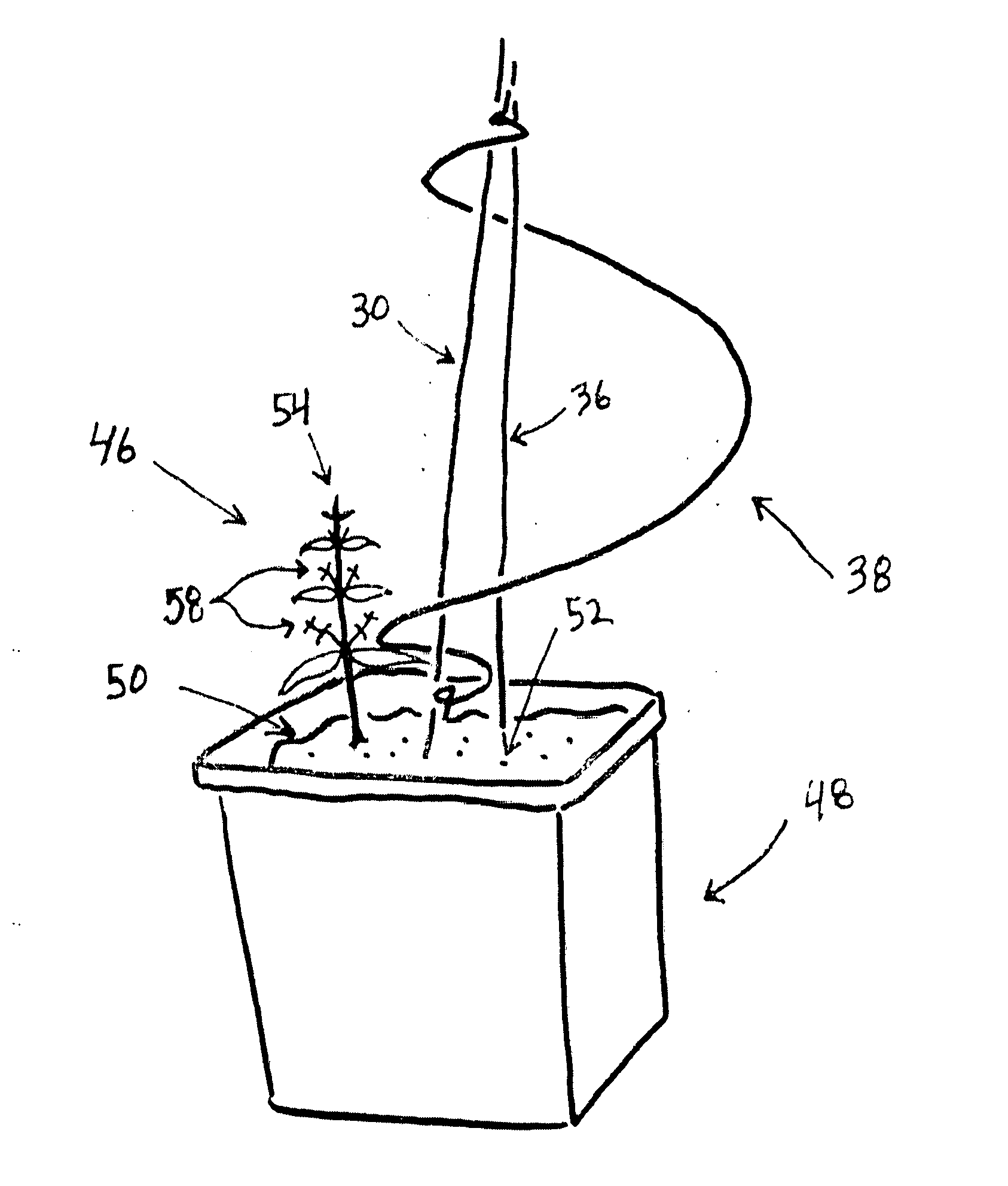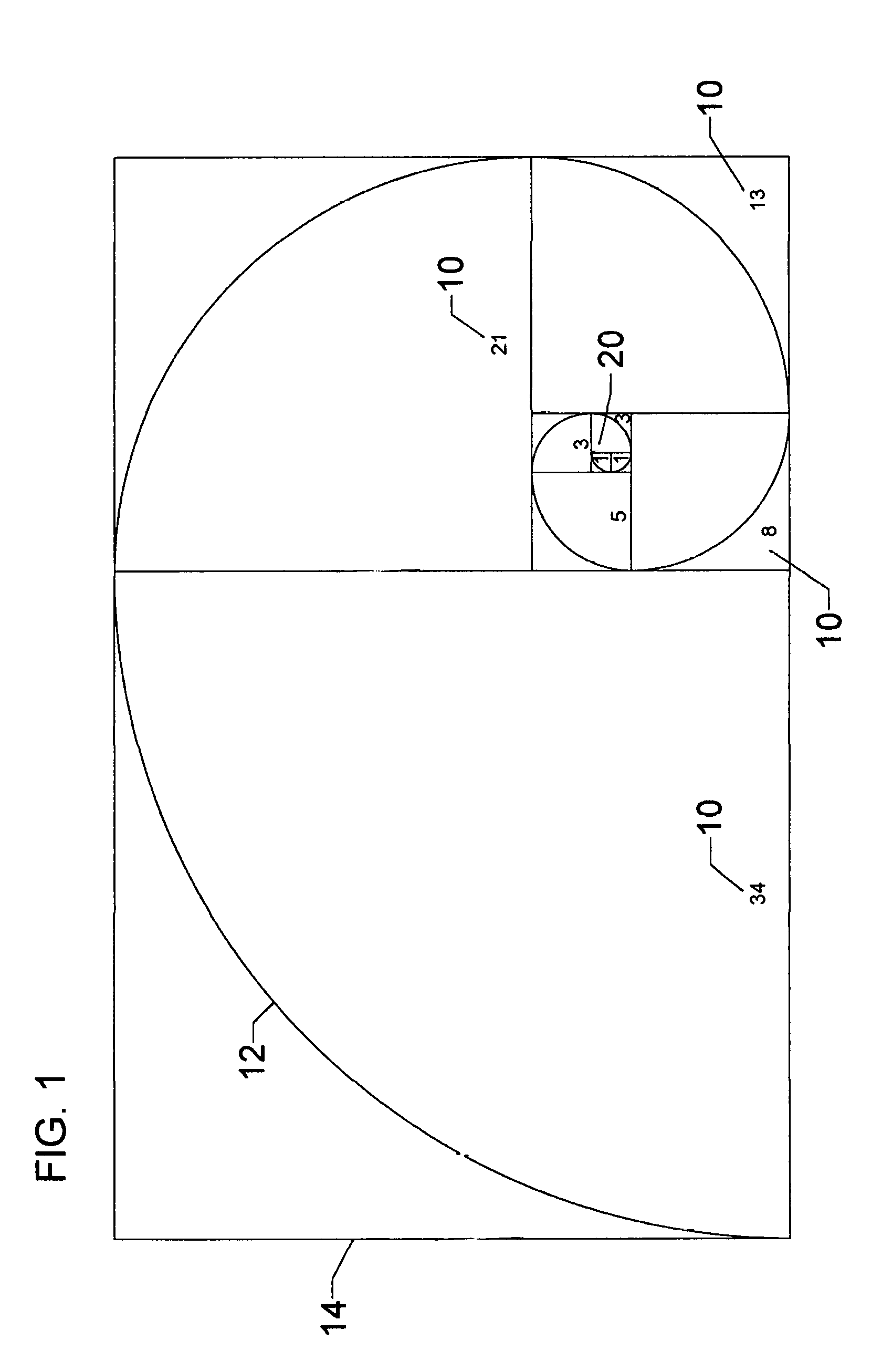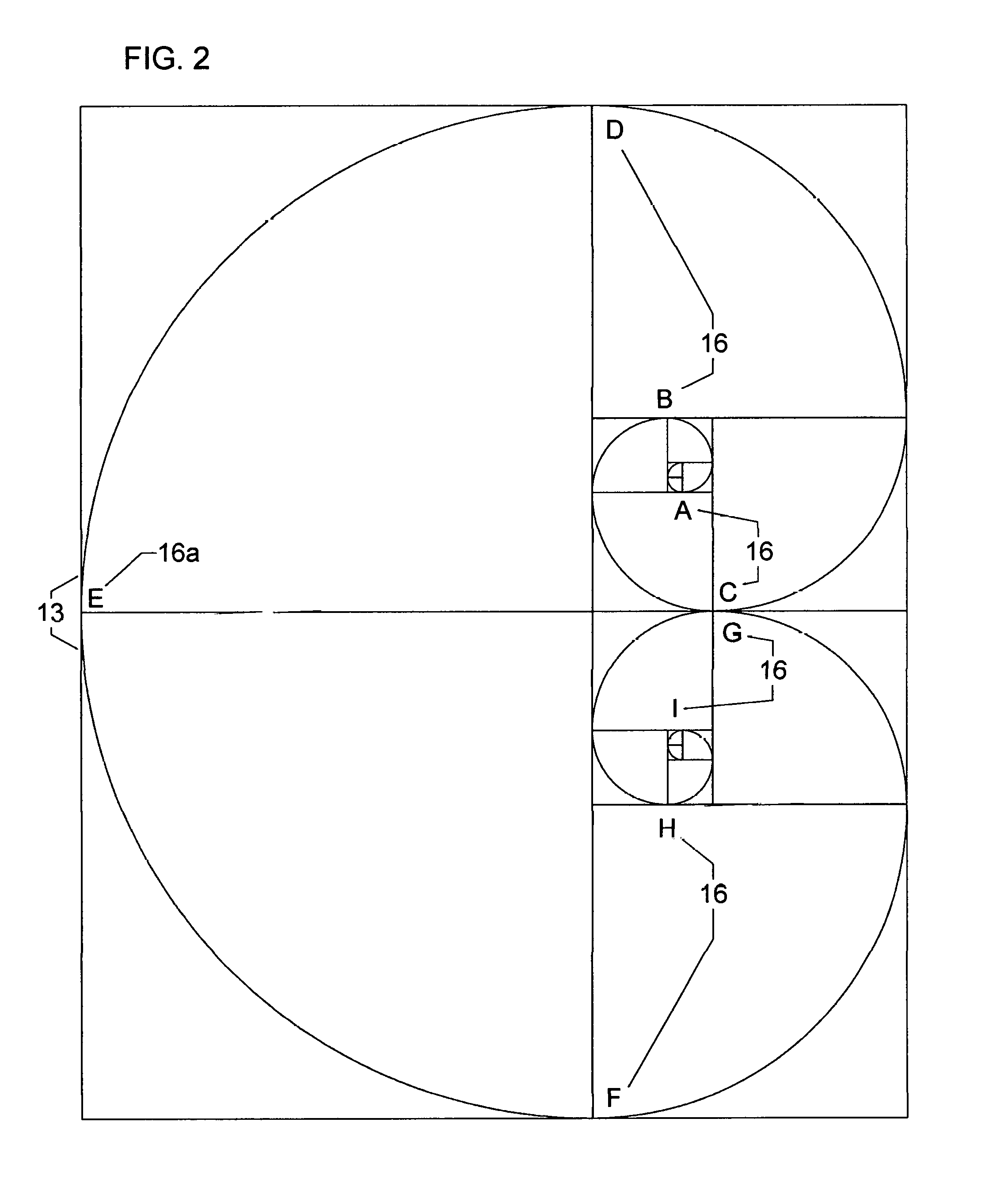Apparatus and method for training plants
a plant and apparatus technology, applied in the field of spring-shaped frames, can solve the problems of affecting the production of many vegetables and other crops, significant drawbacks of cutting a stem or stalk of a plant, and leaving the plant exposed to infection or disease, so as to improve the growth rate of the plant and improve the effect of plant growth rate and reducing the wait time between bends
- Summary
- Abstract
- Description
- Claims
- Application Information
AI Technical Summary
Benefits of technology
Problems solved by technology
Method used
Image
Examples
Embodiment Construction
[0032]In nature growth frequently occurs in geometrically proportionate ways or patterns. These growth patterns have been linked to a mathematical expression referred to as Fibonacci Sequence or Golden Ratio. As shown in FIG. 1 Fibonacci Sequence10 (1,1,2,3,5,8,13,21,34) squares 14 and Spiral 12 grow at a rate similar to that of PHI 1.618 for each quarter turn from the center point 20. The Fibonacci Spiral and the Golden Spiral are very close approximations of one another and are considered equivalents for purposes of the present invention.
[0033]These natural growth patterns are often expressed in the spiral shape, for example, as seen in the nautilus shell, snail shell, fern, arrangement of sunflower seeds on a sunflower, and so on, a spiral being a curve on a plane that winds around a fixed center point at a continuously increasing distance from the center point. In natural growth of plants there is no simpler law than this, namely that it shall widen and lengthen in the same unva...
PUM
 Login to View More
Login to View More Abstract
Description
Claims
Application Information
 Login to View More
Login to View More - R&D
- Intellectual Property
- Life Sciences
- Materials
- Tech Scout
- Unparalleled Data Quality
- Higher Quality Content
- 60% Fewer Hallucinations
Browse by: Latest US Patents, China's latest patents, Technical Efficacy Thesaurus, Application Domain, Technology Topic, Popular Technical Reports.
© 2025 PatSnap. All rights reserved.Legal|Privacy policy|Modern Slavery Act Transparency Statement|Sitemap|About US| Contact US: help@patsnap.com



